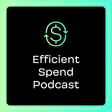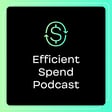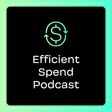
From Micro Celebrities to The Terminator: Leveraging Influencers for Maximum Impact | Sean Bacastow
SUBSCRIBE TO LEARN FROM PAID MARKETING EXPERTS 🔔
The Efficient Spend Podcast helps start-ups turn media spend into revenue. Learn how the world's top marketers are managing their media mix to drive growth!
In this episode of the Efficient Spend Podcast, Sean Bacastow, a tech marketing veteran and founder of PeerFunnel, shares the intricacies of influencer marketing and the real value behind social media metrics. He also discusses how his experience with celebrities like Arnold Schwarzenegger shaped his advertising approach.
About the Host: Paul is a paid marketing leader with 7+ years of experience optimizing marketing spend at venture-backed startups. He's driven over $100 million in revenue through paid media and is passionate about helping startups deploy marketing dollars to drive growth.
About the Guest: Sean Bacastow is a seasoned marketer with a decade of experience in tech marketing, including leadership roles at companies like Represent and Cameo. He's now the founder of PureFunnel, where he helps tech startups grow through strategic advertising across platforms like Facebook, Instagram, Google, and more.
VISIT OUR WEBSITE: https://www.efficientspend.com/
CONNECT WITH PAUL: https://www.linkedin.com/in/paulkovalski/
CONNECT WITH SEAN: https://www.linkedin.com/in/seanbacastow/
EPISODE LINKS:
https://purefunnel.com/#calendly
https://www.cameo.com/about
https://www.diewithzerobook.com/welcome
https://ads.google.com/intl/en_PH/home/?pli=1
https://www.coca-colacompany.com/
https://garyvaynerchuk.com/



